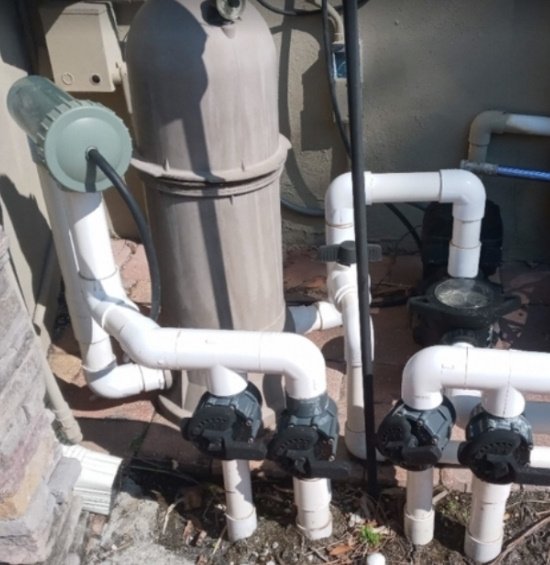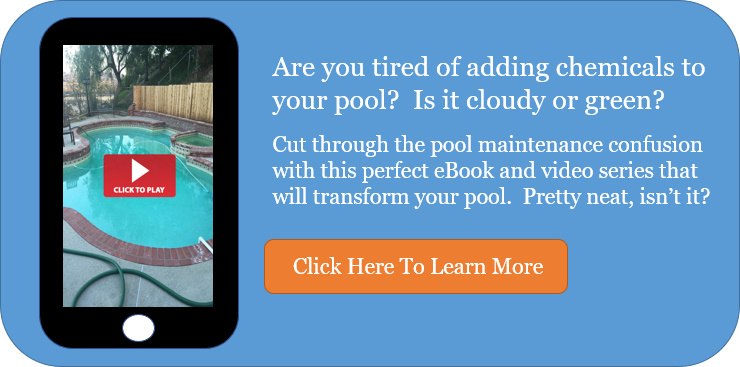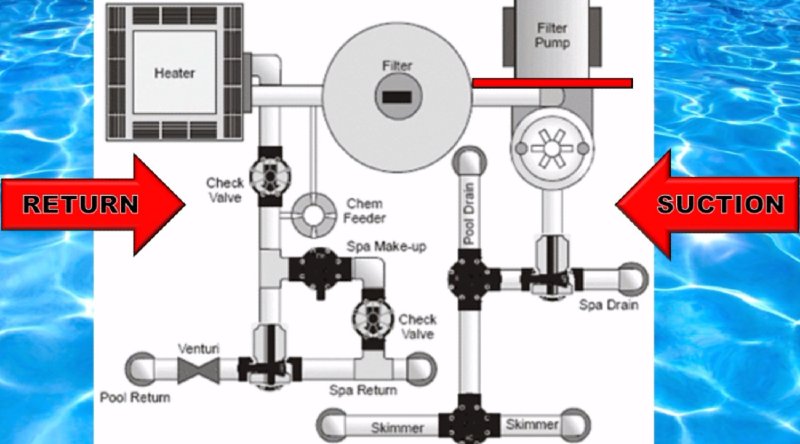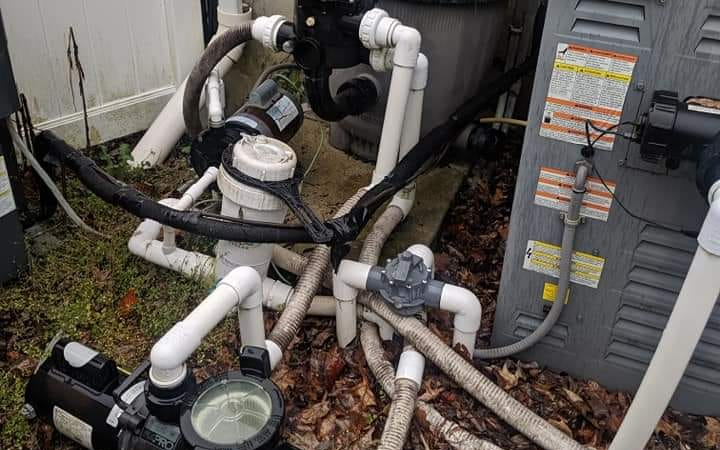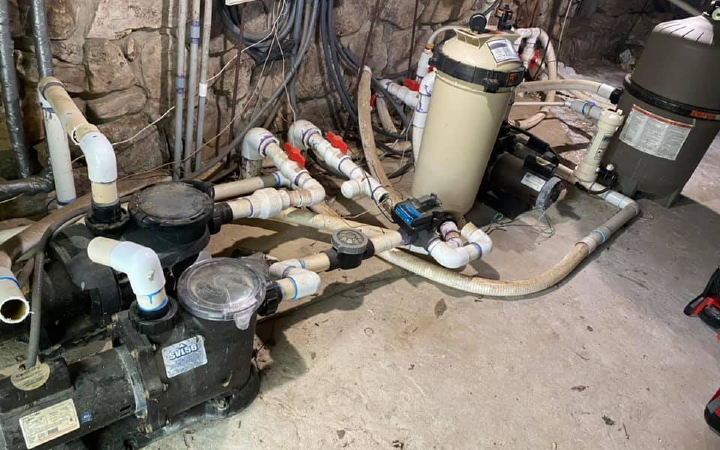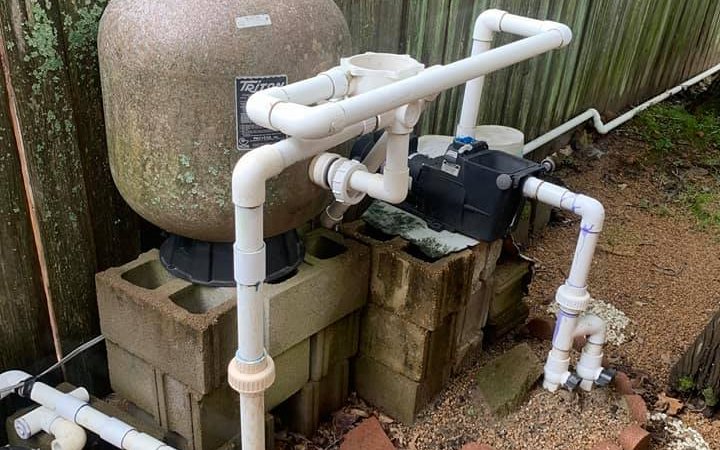Understand Your Pool Plumbing
Some pool builders, pool contractors, and self-proclaimed "pool guys" tend to rush through the pool plumbing jobs. I'm a member of 5 pool professional Facebook groups and the horror stories I've read about, along with my personal stories, could fill the New York City library. Bad pool plumbing, jobs not done correctly, or sometimes not finished at all, are the subject of countless posts. And the plumbing jobs I've seen during my pool inspections? Don't even get me started.
Why would anyone do a job wrong or make it look like an octopus did it? Nobody will be happy and the pool won't perform up to the proper standard. Pool plumbing should be properly designed to meet state and federal guidelines for flow, turnover rate, and entrapment protection, among other things. It's important that we educate ourselves on our pool plumbing so we can take better care of our pools.
What Are The Parts Of Pool Plumbing?
All of the parts of your pool plumbing work together in perfect harmony. No one part is more important than the other. Collectively, they all play a role in keeping your water clean and perfectly swimmable. Let's start with the inside the pool. The great thing about a pool is its simplicity. There are only 2 sides of a pool and they are the suction side and return side. We'll go into detail about that.
Bottom Drain
Every inground pool has a bottom drain at the bottom of the deep end. Larger pools may have more than one drain, and some pools have drains situated on the side of the pool. I've seen several wall drains during pool inspections for my customers. These drains are really not drains, but an important part of your pool's water circulation feature.
Skimmer
The pool skimmer is an opening in the wall near the top of your pool. All inground and some above ground pools have skimmers. Larger pools may have 2 or more skimmers. The skimmer's job is to collect larger debris like leaves, twigs, and grass clippings from entering the suction plumbing lines.
Suction Side Lines
As the name implies, the suction side of your pool plumbing contain the pool skimmers and bottom drain. The pool pump motor pulls the water from these areas and the end point is the pool pump pot. Most, if not all, pool plumbing uses PVC pipes. The suction side is from the pool to the pump motor.
Pump Motor
Without the pool pump motor, nothing would happen. Located inside the pump motor is an impeller. This impeller spins to create a powerful suction force. It's this process that pulls water from the skimmer and bottom drain through your pool plumbing.
It's important to check your pool's water level and maintain it 1/3 - 1/2 up from the bottom of the skimmer. The pump motor is designed to pull in water, not air. If the water level gets below the skimmer, air could be sucked into the system which can cause premature wear on your pump motor.
Pool Filter
Your pool filter is designed to do just that, filter the water. Dirty water enters the filter, the dirt gets trapped inside the filter, then clean water comes out the other side.
Return Side Lines
So we know the filter captures the dirt and debris, but what now? That's where the return side lines come into play. Basically, the return side is all the pool plumbing from the pump motor back to the pool. The pool components that you will find on the suction side include the filter, heater, chlorine tablet feeder, and chlorine generator.
Return
Return side lines and returns? What's up? Well, we're talking about 2 different things. The return side line is the actual PVC pool plumbing, while the returns are in the pool. They're also called jets or return jets and are openings in the pool wall where the clean filtered water reenters the pool.
Pool returns in the shallow end should point upward, and the returns in the deep end should point down for the best water circulation.
Pool Plumbing Diagram
Below you will find a diagram that I've used for years for my F.T.A. Pool Fix It Video Series, pool consultations, and for new pool owners. Having a bird's eye view of your pool plumbing and seeing where each part is located and how they work together can give you an even better understanding of how your pool plumbing works. This is one of the critical areas I checked when I do my pool inspections.
What Pool Plumbing Should Not Look Like
Remember when I said some "pool guys" do the job and then cut and run? These poor pool owners were on the hook for someone else's mistakes. You can see this is not the best way to plumb a pool.
Become A Pool Plumbing Expert
Maintaining a pool is more than testing the water, adding chemicals, and removing debris from the top of the water. Understanding and having a detailed knowledge of your pool plumbing can go a very long way and will help you have a clean pool and extend the life span of your pool equipment.
